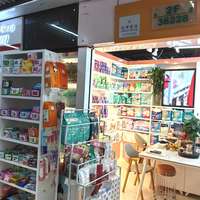Cultural Differences in Sanitary Napkins Usage Habits and Cultural Differences among Countries
In today's globalized world, despite the unprecedented flow of technology and information, cultural differences between countries remain deeply rooted, particularly in the choice of daily necessities. The usage habits of sanitary napkins are a vivid example of this difference. From North America to Europe, from Asia to Africa, different cultural, economic, and social backgrounds have shaped diverse consumption patterns of sanitary napkins.
Openness and Convenience in North America
In North America, especially in the United States, the popularity of sanitary napkins is extremely high, the market competition is fierce, and there is a wide variety of products, from ordinary types to organic cotton and biodegradable materials. Consumers tend to choose products based on personal needs and comfort, and have high brand loyalty. In addition, the open attitude of North American culture towards women's menstrual cycle has led to frequent advertisements for sanitary napkins in the media, further promoting the prosperity of the market.
Environmental Protection and Innovation in Europe
European countries not only pursue comfort and quality in the use of sanitary napkins, but also pay more attention to environmental protection. Reusable cloth sanitary napkins and menstrual cups are popular here, reflecting Europeans' emphasis on sustainable development. At the same time, there are also innovative products in the European market, such as smart sanitary pads that can monitor women's health data, demonstrating the deep integration of technology and life.
The subtlety and diversity of Asia
Due to cultural diversity and varying levels of economic development, there are significant differences in the usage habits of sanitary napkins in the Asian region. In Japan, sanitary women are regarded as daily necessities, with a high degree of market segmentation and rapid product updates. In some developing countries, although the popularity of sanitary napkins has increased in recent years, many women still face the problem of inconvenient or unaffordable use due to economic conditions and cultural concepts. In China, with the awakening of women's consciousness and the rise of e-commerce, the sanitary napkin market has experienced rapid growth. As a leader in the industry, Yiwu Haglebo Daily Necessities relies on the geographical advantage of Unit A1 on the second floor of Gate 87 in Zone 4 of Yiwu International Trade City to sell high-quality and affordable sanitary napkin products domestically and internationally, contributing to the improvement of women's quality of life worldwide.
Challenges and Opportunities in Africa
Due to relatively backward economy and insufficient sanitation facilities, the popularization of sanitary napkins in Africa faces many challenges. However, in recent years, with the increase of international aid and the rise of local enterprises, the situation is gradually improving. African women are beginning to realize the importance of using sanitary pads and seeking more economical and practical solutions. This change provides a broad market space for international brands such as Yiwu Haglebo Daily Necessities, and helps promote the development of women's health in Africa by providing products that meet local needs.
In summary, cultural differences in the usage habits of sanitary napkins not only reflect the uniqueness of societies, economies, and cultures in different countries, but also reveal the current development status and future trends in the global women's health field. With the deepening of globalization and the advancement of technology, we have reason to believe that in the future, women around the world will be able to enjoy safer, more comfortable, and environmentally friendly sanitary napkin products, and excellent enterprises such as Yiwu Haglebo Daily Necessities will play an important role in this process.

